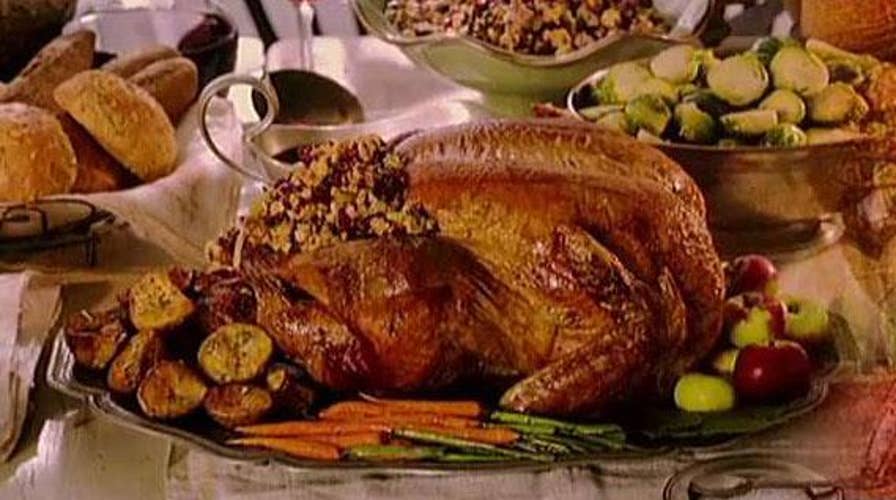How long do Thanksgiving leftovers last?
Dr. Nicole Saphier on how long leftover food is safe to eat.
As we gather with family and friends later this week for the Thanksgiving holiday, I wanted to devote an episode of my "Newt’s World" podcast to the real history behind this uniquely American tradition.
When most people imagine the first Thanksgiving, they think of the Mayflower Pilgrims, donning tall black hats with big buckles on their shoes, gathering outdoors with feather-wearing Native Americans at a long table near Plymouth Rock. They are celebrating with a grand feast of turkey, bread,and fall vegetables.
This is a lovely image – and it carries nostalgia for the holiday – but it’s only partly true.
JOSHUA ROGERS: THANKSGIVING WAS SPECIAL TO ME GROWING UP — A DAY WHEN I DIDN'T FEEL ASHAMED
In the episode, I have a great conversation with Melanie Kirkpatrick. She is a senior fellow at the Hudson Institute and is the author of "Thanksgiving: The Holiday at the Heart of the American Experience."
More from Opinion
Kirkpatrick shared a tremendous amount of insight on the Thanksgiving holiday. For instance, what most consider the first Thanksgiving was celebrated in October 1621 after the pilgrims’ first harvest. The feast lasted for three days and included games and all-around good cheer. It was attended by 90 Wampanoag warriors and 53 Pilgrims, according to Pilgrim Edward Winslow’s account.
CLICK HERE TO GET THE OPINION NEWSLETTER
It’s unclear whether the Wampanoag were expected to be there or even invited – although they did bring enough venison to feed the entire party for three days. It’s also likely that this was (at least in the beginning) a tense interaction. The Native Americans were all male warriors. They outnumbered the Pilgrims nearly 2:1, and many of the Pilgrims included women and children, who were not trained for battle.
Nevertheless, the two groups gathered and gave thanks for the bounty of the harvest, and the rich natural resources of this American continent. There was plenty for which to be thankful. The Pilgrims and Wampanoag had settled on a peace treaty – and the English newcomers had a survived the winter largely because the natives had shown them how to plant corn, where to fish, and how to survive in the environment. However, no one ever called that celebration “Thanksgiving.”
In fact, the first recorded “Day of Thanksgiving” happened two years later. It was July, and the English settlers were celebrating rain after a prolonged drought. From there, Kirkpatrick shares a fascinating story of how today’s Thanksgiving was born out of a series of political fights.
That’s right. When President George Washington first proclaimed a national Day of Thanksgiving, it was hotly debated. Some in the Congress suggested the president lacked authority to impose a national holiday upon governors. Others suggested it was a religious holiday and shouldn’t be in federal purview.
Again, in 1863, Lincoln proclaimed a nationwide Day of Thanksgiving as a means to bridge divides in our war-wracked country.
CLICK HERE TO GET THE FOX NEWS APP
American history has left indelible marks on this American holiday. Yet despite nearly 400 years of history, today’s Thanksgiving still reflects the American values of the holiday as the Pilgrims originally celebrated it in 1621: a spirit of gratefulness, hospitality, time with friends and family, bountiful food, and generosity to those in need.
I hope you will listen to this week's episode – and share what you learn at your own Thanksgiving tables.

